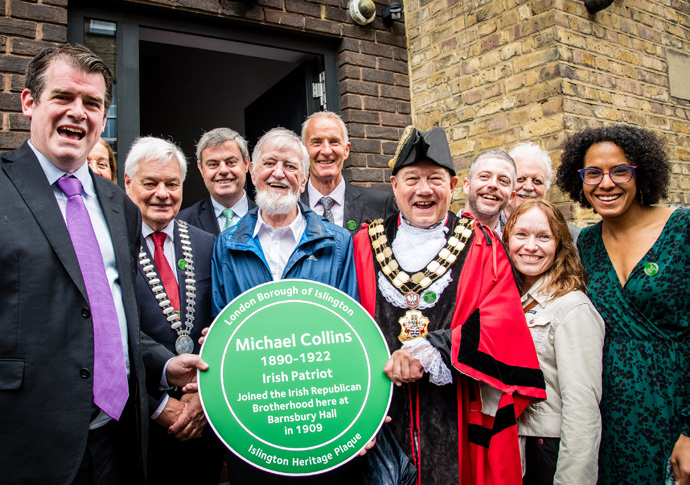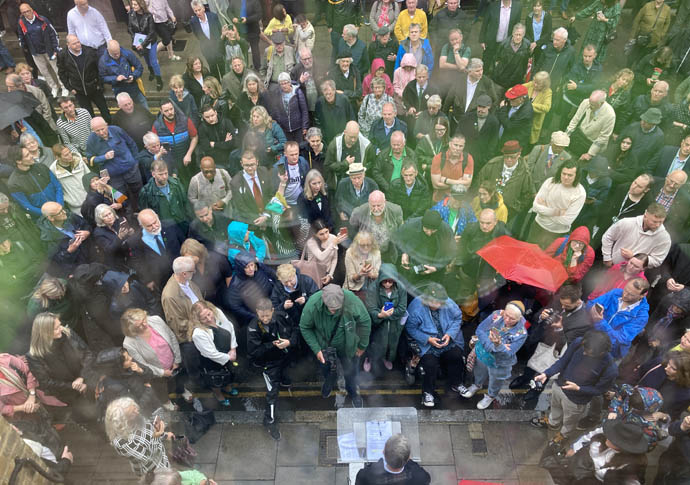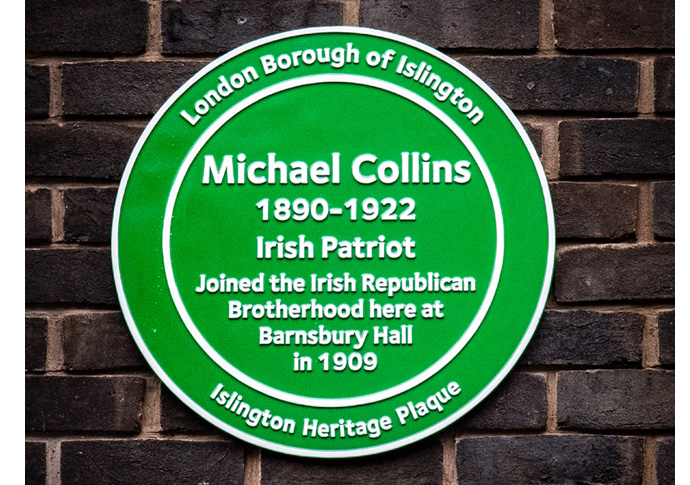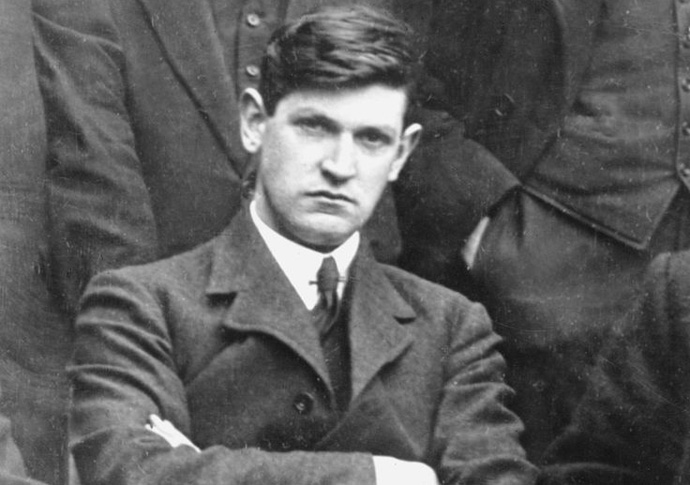Plaque to honour ‘greatest Irishman’
Unveiling by great grandnephew of the Irish republican leader
Friday, 21st July 2023 — By Charlotte Chambers

The mayor and Michael Collins’ great-grandnephew Aengus Collins O’Malley, far left, at the unveiling
A PLAQUE has been unveiled in honour of Irish republican leader Michael Collins, 101 years after his death in 1922.
The heritage plaque was unveiled on Friday by his great-grandnephew Aengus Collins O’Malley in Barnsbury Street on the former site of Barnsbury Hall, where Mr Collins was inducted into the secret nationalist organisation the Irish Republican Brotherhood (IRB) more than a century ago.
Mr Collins was described last year by Irish Taoiseach Micheál Martin “as one of the greatest Irishmen to have ever lived”. He was instrumental in the Anglo-Irish Treaty of 1921 which led to the establishment of the Irish Free State after more than 800 years of British rule. He was a key player in the move for independence through his involvement with the republican party Sinn Fein and the Irish Republican Army (IRA).

Mr Collins O’Malley told the Tribune: “Michael Collins is very much seen as the father of the Irish nation. Poll after poll he’s Ireland’s George Washington. He’s seen as the most significant figure in the war of independence; the person who built up Ireland to get independence from British rule.”
For Mr Collins O’Malley, who made a cameo appearance in the 1996 Collins biopic starring Liam Neeson, the unveiling of the plaque was bittersweet: a chance to celebrate a great man, but also a time to rue what might have been, had he – and fellow Irish compatriot and “surrogate father” Sam McGuire – not been killed so young.
He said: “The story of Michael Collins and Sam McGuire – obviously Sam died in 1927, Michael died 1922 – it’s very much a story of what might have been for Ireland. Two very talented men.”
Mr McGuire, who worked in Clerkenwell’s Mount Pleasant post office, introduced Mr Collins to the IRB.
Mr Collins O’Malley described him as a forgotten man in the fight for independence and praised his influence. “When you go home, read up on Sam McGuire, because he was an incredible man,” he urged the crowds.

He said that while his great grand-uncle reluctantly agreed to a partially united Ireland under the terms of the Treaty – and swearing allegiance to the crown – it had been his goal to see all of Ireland joined together once more one day.
“He’d be very disappointed by that because he was obsessed with – you read his writings – he was obsessed with the north, you know?” he said. “I mean, one way to look at it is he got the 26 counties [but] didn’t quite get [the other] six.”
More than 100 people including assembled dignitaries from Ireland stood in the pouring rain for more than an hour to see the string pulled on the plaque, which was part of a joint project between the council and community group the Terence MacSwiney Commemoration Committee.
Councillor Diarmaid Ward said: “We’re just really proud of all the Irish people who have made their home here and built Islington.
“And to have this connection with Michael Collins makes me really, really proud as well.”
Who was Michael Collins?

Michael Collins in 1919
MICHAEL Collins, the son of a farmer, was born in Sam’s Cross, West Cork, on October 16, 1890. He was educated locally before landing a job at the Post Office Savings Bank in West Kensington and moving to London in 1906 to join his sister Hannie Collins, writes Sumeya Dahir.
While there, he became associated with the Irish Republican Brotherhood, a secret society devoted to the setting up of an independent democratic republic in Ireland.
Collins went on to lead the Irish Republican Army (IRA), the National army and the provisional government of the Irish Free State. He died in August 1922 after being shot by anti-Treaty activists during the Irish Civil War.
Collins fell in love with Kitty Kiernan, his best friend Harry Boland’s girlfriend. The couple became engaged but were separated when he was sent to London. Between 1919 and 1922 they exchanged 300 letters and had two sons.
In a poll in 2000, Collins was voted Irish Person of the 20th Century and Ireland’s overall Person of the Century.